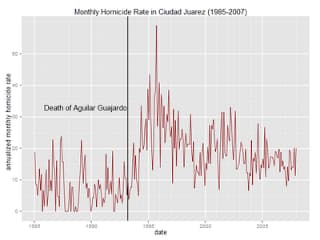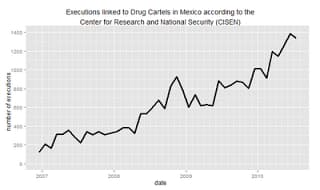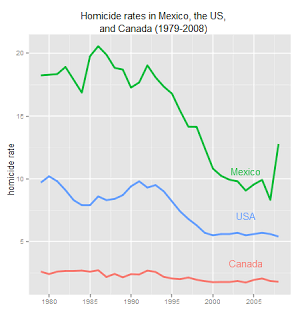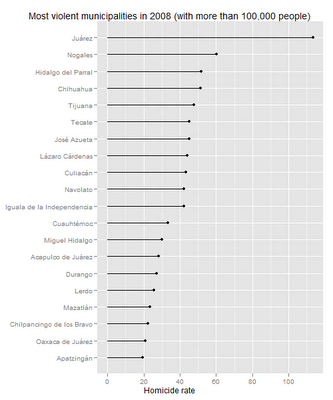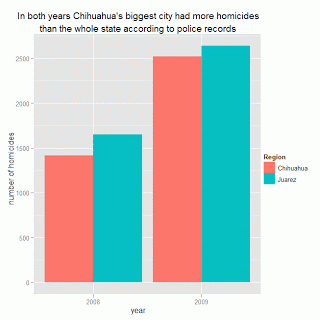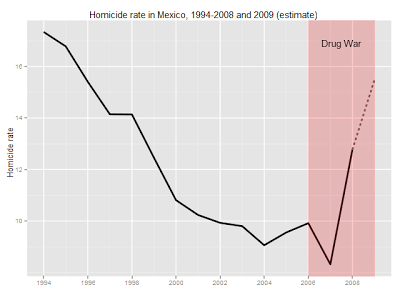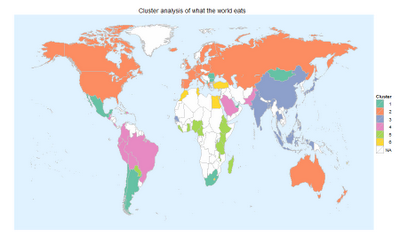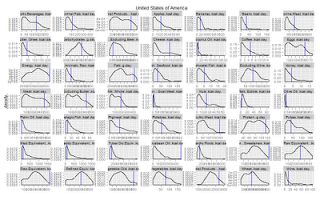- The top six most violent municipalities are near the US border. Ciudad Juárez is in a class by itself with 113 homicides per 100,000 people.
- José Azueta is the municipality where Zihuatanejo is located. Mazátlan, another popular tourist destination, also appears on the list.
- Lázaro Cárdenas is the largest ...
Last year there were over 2,600 murders in Ciudad Juarez, and if the more than 1,800 murders so far this year are any indications, there will be even more murders in 2010. Ciudad Juarez is a scary place, but it wasn’t always that way…
I learned from Noel Maurer’s Blog that Ciudad Juarez used to have a low murder rate before 1993, but it rose steeply after the local leader of the Juarez Cartel, Aguilar Guajardo, died, and Amado Carillo replaced him. After Amado Carrillo had firmly established himself thing calmed down somewhat, but by then the violence had switched to a new equilibrium. But anyways, go read Noel Maurer’s take on it
